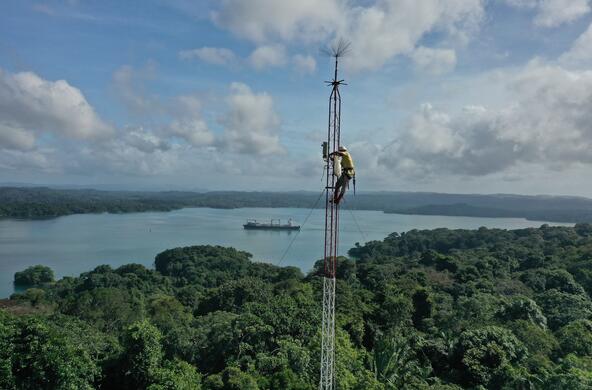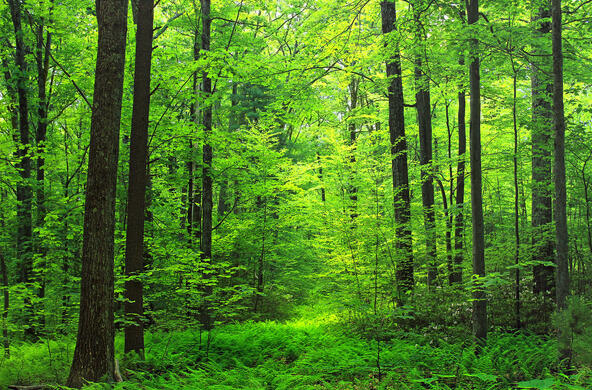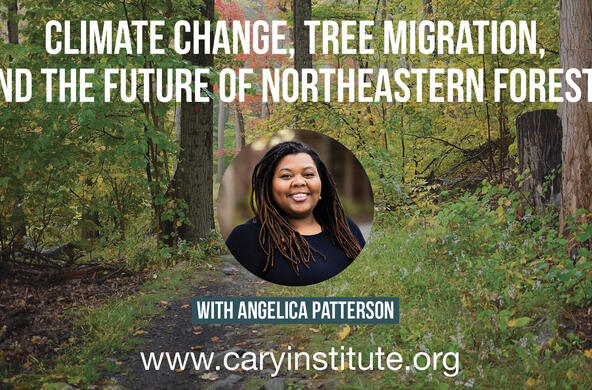Forests have been embraced as a natural climate solution, due to their ability to soak up carbon dioxide from the atmosphere as they grow, locking it up in their trunks, branches, leaves, and roots. But a new study confirms widespread doubts about the potential for most forests in the Western US to help curb climate change.
Published in Earth’s Future, the paper analyzed trends in carbon storage across the American West from 2005 to 2019. Led by Jazlynn Hall, a forest and landscape ecologist at Cary Institute of Ecosystem Studies, the team found that throughout most of the region, climate change and fires may be causing forests to store less carbon, not more.
“There’s a lot of momentum to use forests as natural climate solutions,” said Hall. “Many climate mitigation pathways rely in part on additional forest carbon storage to keep warming below 1.5 degrees C this century. We wanted to provide a baseline for how much carbon is currently stored in Western forests, how it’s changing, and how disturbances like fire and drought pose a threat to climate mitigation targets.”
The authors warn that many Western forests could see a rapid acceleration of carbon loss in the coming years or decades. “These challenges have the potential to compromise carbon storage capacity and undermine our ability to mitigate climate change,” Hall cautions.
By providing an unprecedented view of threats at landscape and regional levels, Hall and colleagues provide a framework that could help forest managers adapt site-specific strategies to strengthen forest resilience. They also identify the remaining areas with the lowest risk and highest potential to store carbon, such as the Pacific Northwest.

A new way to track forest carbon storage
Using survey data collected by the US Forest Service, Hall and colleagues estimated how much carbon was stored in living and dead trees in 19 ecoregions across the West. These ecoregions correspond to the diverse climatic and ecological areas ranging from the hot and dry Southwest to the wet and cool Pacific Northwest.
Forest Service data enabled the team to derive trends in carbon storage between 2005 and 2019. Machine learning was used to understand which factors — including human activities, wildfire, topography, and climate — were most likely driving those trends.
“Our study develops new methods to carefully estimate forest-carbon storage at a regional level, track it over time, and diagnose the causes of changes over time,” said co-author Park Williams, a hydroclimatologist at UCLA. He expects the methods will be useful in monitoring carbon storage levels going forward, as well as assessing the carbon impacts of management efforts such as forest thinning and prescribed burning.
Senior author Winslow Hansen, a forest ecologist at Cary Institute, said one of the study’s strengths is that it covers a broad geographic area at high resolution, making it possible to guide forest stewardship and climate solution projects at both the local and regional levels.
Climate solution, or carbon source?
The study revealed that carbon stored in living trees declined across much of the Western US between 2005 and 2019. Dead carbon — the carbon stored in dead trees and woody debris — increased. Standing dead trees and fallen logs do not provide long-term carbon storage, instead releasing it back into the atmosphere through decomposition or combustion in forest fires.
After analyzing the data, a machine learning algorithm identified climate and fire as the major potential drivers of these disturbing carbon trends. Climate (here measured as precipitation, temperature, and air moisture) was the most important driver of live carbon trends for eight of 19 ecoregions, and the second most important driver for nearly all the other ecoregions. Fire was the first or second most important driver in two-thirds of the ecoregions surveyed.
Also concerning is the fact that current carbon storage levels in many western forests are likely artificially high, due to the fire suppression practices of recent centuries. These practices have made fuels more dense in forests, contributing to recent record-breaking fires.
“Dry forests in the Western US may be acutely vulnerable to carbon loss without strong and immediate investment in proactive forest management [such as thinning and prescribed burning],” the scientists write.
The study also reveals different trends and drivers at the regional, ecoregional, and even local levels (see map below). Bucking the declining carbon trend, the Pacific Northwest contained some of the only ecoregions where carbon storage increased during the study period.
“That was the outlier,” Hall explained. “It offers a glimmer of hope that we can change things, especially in human-dominated areas. The Pacific Northwest has seen large-scale efforts to reduce harvesting in old-growth forests and expand protected lands. So, even if some of the regrowth may be on tree farms and destined to be harvested later, some of the regrowth may be permanent.”

A harbinger of the future
When the researchers began the study, data was only available up until 2019. As a result, the analysis did not include the record-shattering wildfire years of 2020 and 2021. The team plans to re-run the analysis when newer data is made public.
“It’s likely that the decline in live carbon that we calculated has already become more pronounced,” said Hall.
Can western forests still serve as a viable climate solution?
“I don't think we can rely on increasing carbon storage in Western US forests,” said Hansen. With stored carbon already on the decline, followed by the devastating fire seasons of 2020 and 2021, he suspects these ecosystems may have reached a tipping point.
However, he added, “I do think we can get to a place where we increase the stability of carbon in western dry forests with mechanical thinning and prescribed burning, but at a lower carbon carrying capacity.”
Toward a more strategic and targeted approach
Hansen is leading a large research program called the Western Fire and Forest Resilience Collaborative, to inform new ways to live sustainably with fire. He says the Collaborative will use the baseline established in this study to track how forest carbon is changing now and over the next five to 10 years. “We will also compare our computer simulations of future trajectories to this baseline,” he said, “to understand how increasing fire and drought may alter forest carbon decades into the future.”
The study’s baseline will also help to track future progress toward climate-mitigation targets, and inform forest management strategies tailored to local conditions.
“This information could serve as the foundation for forest management strategies to maximize carbon storage where we can,” said Hansen, “and to avoid catastrophic emissions of carbon elsewhere.”
Citation
Hall, J., Sandor, M. E., Harvey, B. J., Parks, S. A., Trugman, A. T., Williams, A. P., & Hansen, W. D. (2024). Forest carbon storage in the western United States: Distribution, drivers, and trends. Earth's Future, 12, e2023EF004399. https://doi.org/10.1029/2023EF004399
A contribution of the Western Fire and Forest Resilience Collaborative, this study was made possible, in part, by support from the Gordon and Betty Moore Foundation (GBMF11974), Environmental Defense Fund, Three Cairns Group, the National Science Foundation (2003205 and 2216855), the US Department of Energy (DE-SC0022302), the USDA Forest Service, Rocky Mountain Research Station, and the Aldo Leopold Wilderness Research Institute. Findings and conclusions are those of the authors and should not be construed to represent any official USDA or US government determination or policy.






